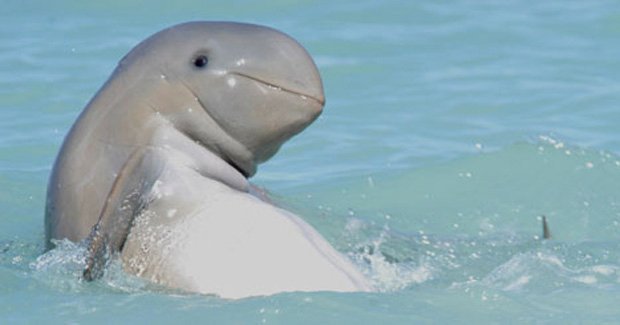Coastal boom threat to Australian river dolphin

A POPULATION OF a rare and little-understood dolphin living in Queensland’s Fitzroy River is threatened by proposed development, says experts calling for them to be better protected.
The Australian snubfin dolphin (Orcaella heinsohni) was only recognised as a separate species in 2005, having been previously confused with the Irrawaddy River dolphin of south-east Asia.
Its rounded forehead and small dorsal fin make the animal unique. It is found from Broome, WA, around the north of Australia to the Fitzroy River, QLD, which is its most southern extent.
Floods and ports threaten population
These dolphins are rare throughout their range – but the isolated and genetically distinct population along the central Queensland coast and the Fitzroy River, 600km north of Brisbane, is at particular threat.
Dr Daniele Cagnazzi, a marine ecologist at SouthernCross University in Lismore, NSW, says that planned port developments could encroach on up to 25 per cent of the dolphin’s habitat if they go ahead.
“We need to be aware that there could be a problem and if there is problem we must be ready to act,” he told Australian Geographic.
In their study, published today in the journal PLoS ONE, Daniele and his colleagues have detailed six years of research into the size and range of the Fitzroy River subpopulation.
They found fewer than 100 individuals living in an area of about 400sq.km.
A small but stable population
Though the population appears currently stable, they are also under threat, Daniele says. The 2011 floods in Queensland caused pollution and sediment to be washed down the Fitzroy River, reducing oxygen levels and killing fish that the dolphins feed on.
Rainfall and floods are expected to increase in the region over coming decades, he says.
The study also found that 14-25 per cent of the species’ habitat could overlap with port developments.
Based on these findings, Daniele’s team are calling for the subpopulation to be listed as endangered internationally by the IUCN (the International Union for the Conservation of Species).
Achieving endangered status may be difficult
The research is “solid and very timely”, says marine ecologist, Simon Allen, of Murdoch University in Perth, WA. But it may be difficult achieving endangered status given how little is known about the animals, he says.
This uncertainty has prevented the Australian government from recognising the species as a whole as threatened.
It’s important to act early though, says Danielle, who points to the example of the now-extinct Yangtze River dolphin of China “It doesn’t take much time for a population to go extinct in the wild,” he says.
RELATED STORIES

